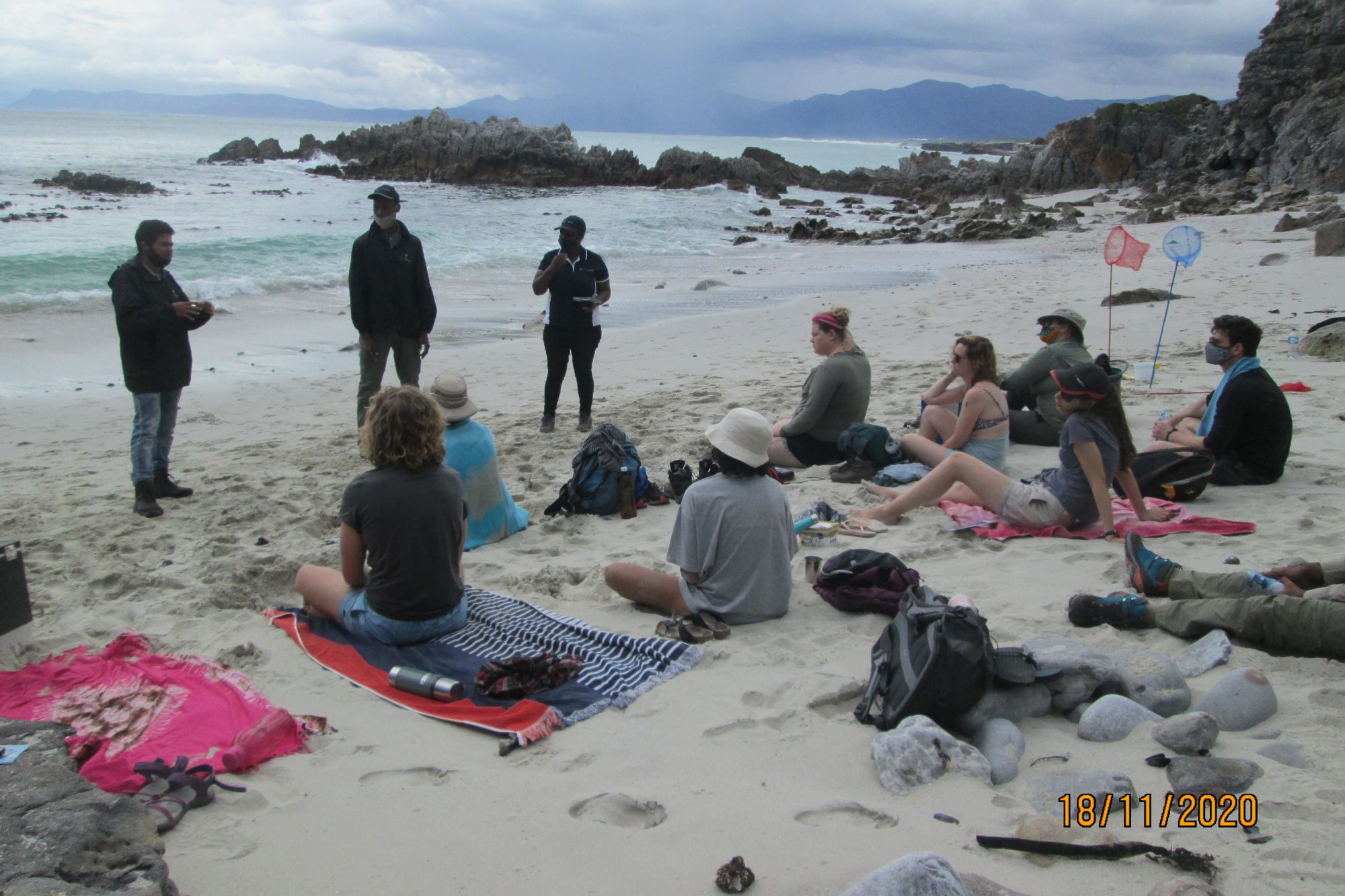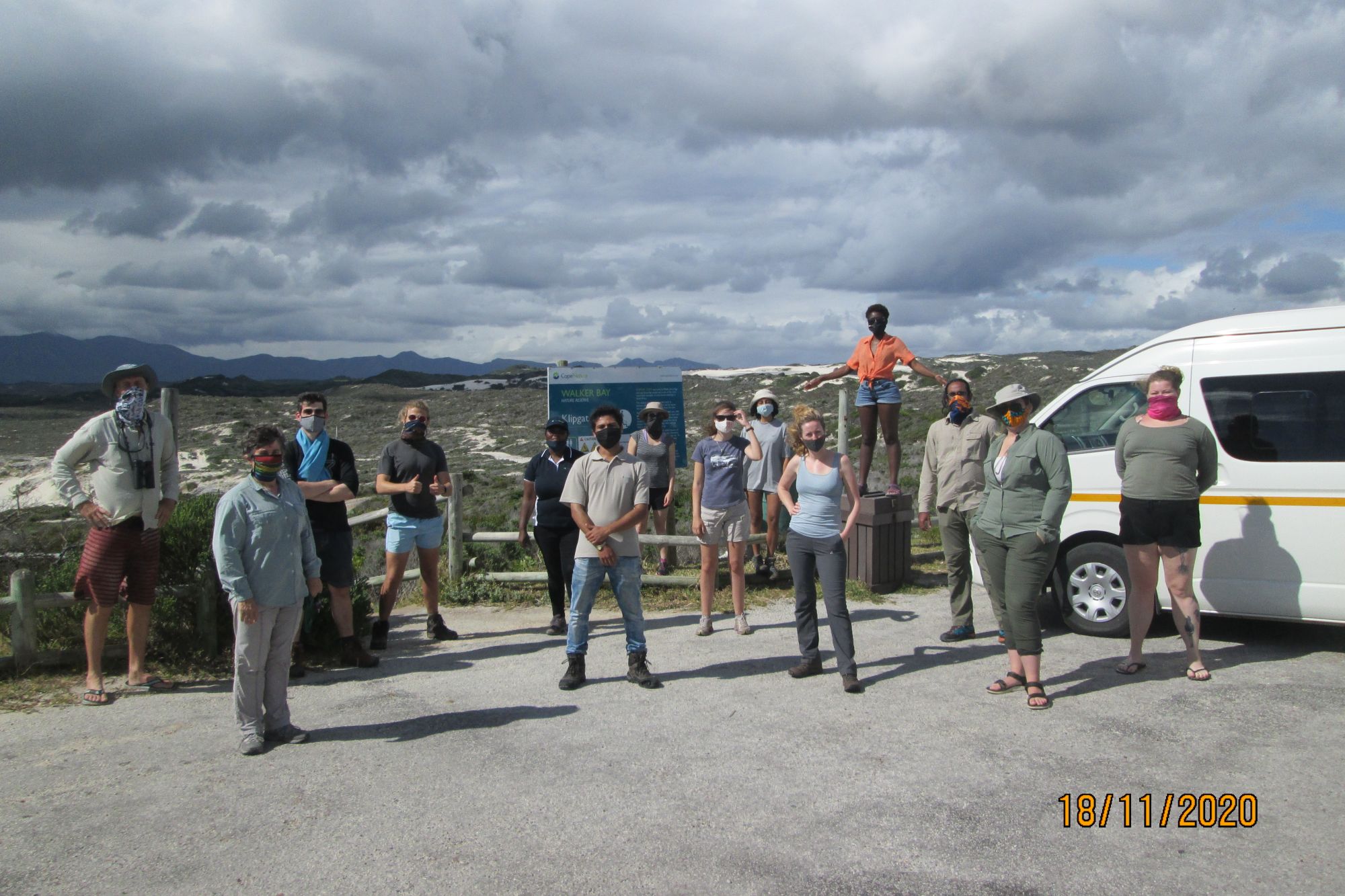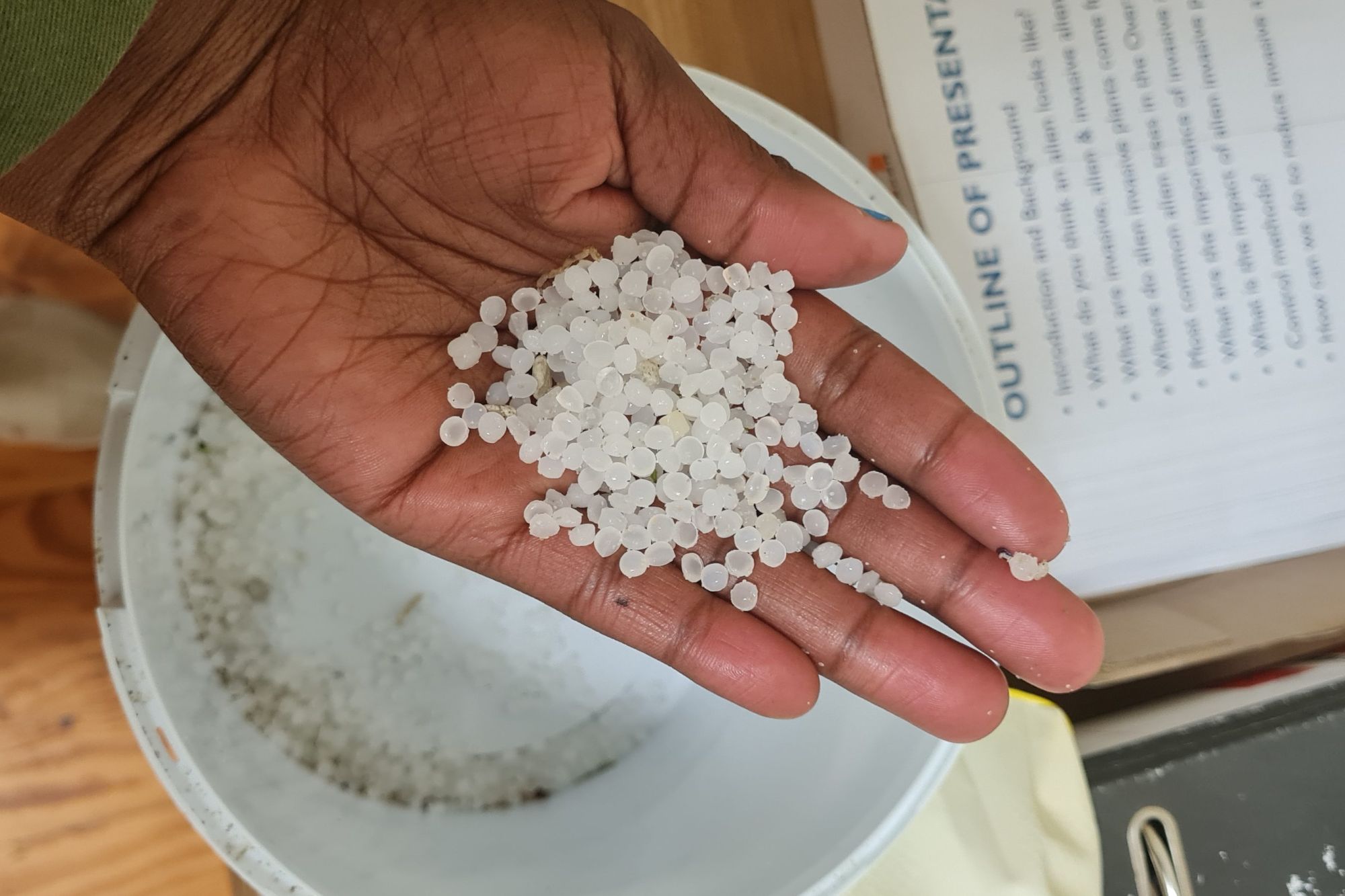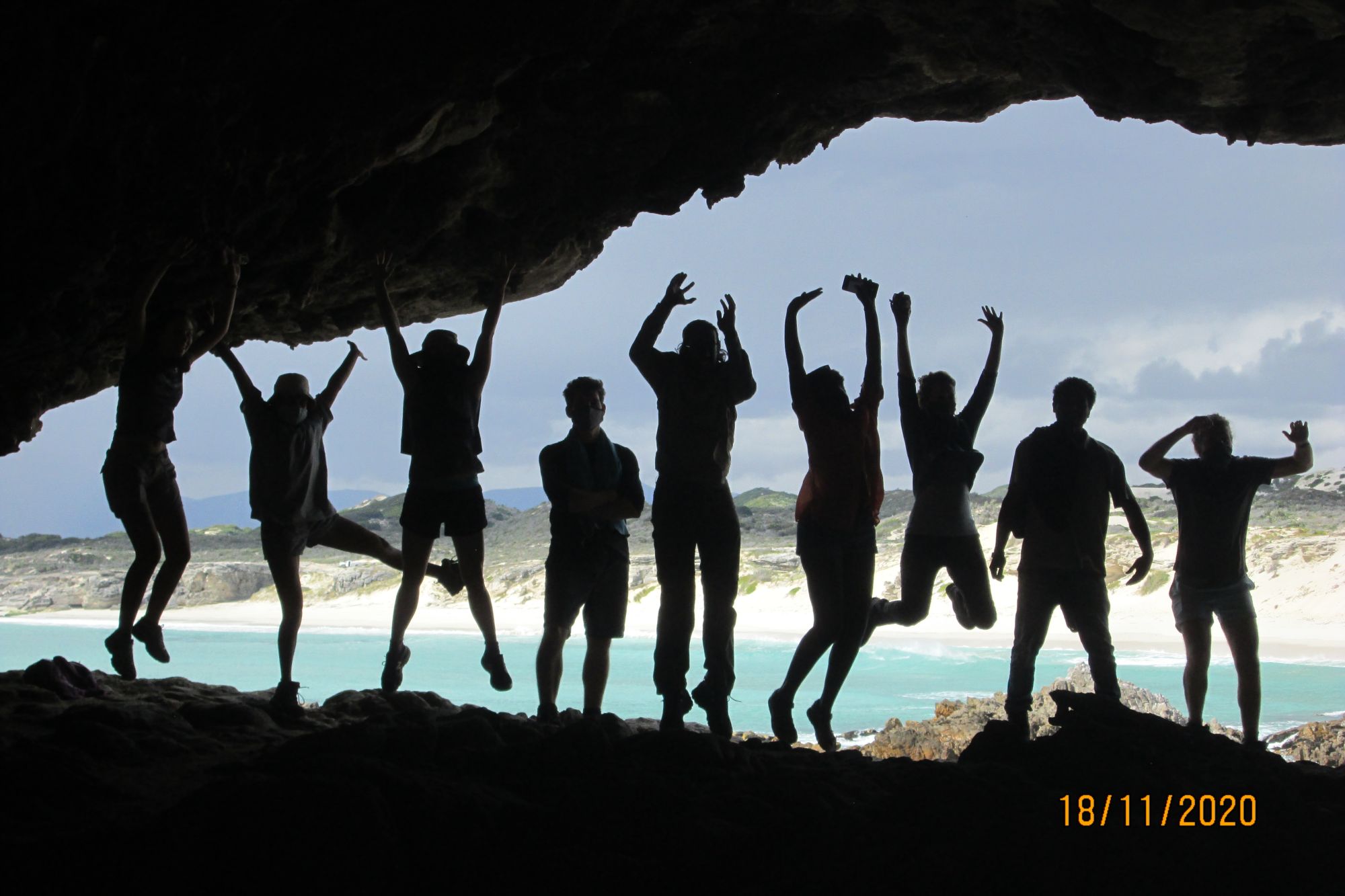
Beach Litter at Walker Bay - study results
CapeNature staff facilitated entry into the Die Kelders section of the Walker Bay Reserve, where Peter Ryan and Coleen Moloney, senior researchers from UCT supervising the Conservation Biology Masters group, together with Grootbos Foundation representative as well as group co-ordinator, Paula Strauss participated in a beach clean-up. The area has been plagued by miniature plastic items polluting the beach and the study was especially pertinent in light of large amounts of nurdles (small plastic pellets) washing up on beaches on the east coast of South Africa.

By Peter Ryan and Coleen Moloney, senior researchers, UCT
There is growing concern about the amounts and impacts of plastics in marine ecosystems. Many waste plastics wash up on coastlines, where they can affect physical properties of the beaches and potentially impact marine biota but the main impact is the reduced aesthetic appeal of polluted beaches. This report summarises data on plastic and other litter on the Walker Bay beach between Hermanus and Gansbaai, Western Cape, South Africa.
Walker Bay has a 16.5 km sandy beach running from the mouth of the Kleinriviersvlei to De Kelders. The beach at the De Kelders end of the beach has been included in a long-term monitoring study of beach litter since 1984. Tackling plastic litter requires an understanding of its sources. Some items are readily ascribed to sources (e.g. fishing line is mostly discarded by anglers on the beach, whereas fishing nets and buoys come from offshore fishing operations), but general litter could come from beach-goers, wash ashore from local land-based sources (i.e. litter from nearby towns that washes into the sea down storm drains or rivers), or come from offshore sources (either dumper illegally from ships, or through long-distance drift from distant sources).

Bottles and lids are a useful way to disentangle these different sources of litter. In 2020, the entire Walker Bay beach was walked to sample for bottles (27 February) and lids (17 September). These items were examined for manufacturers marks and information on the date of manufacture to infer the origins and ages of litter items. The southern 3 km was again cleaned on 18 November, roughly two-months after the International Coastal Clean-up event.
Results and Discussion
A total of 462 bottles and 2219 lids was collected (88% and 79% during initial surveys, respectively). During the November collection, a further three full garbage bags of mostly plastic litter was collected, weighing a total of some 15 kg. The surveys along the entire beach indicated that cleaning effort is concentrated at either end of the beach, where access is easiest. Future clean-up efforts should target the central part of the beach, where the standing stock of litter is appreciably higher. Litter densities tended to be greater at the southern (De Kelders) end of the beach, presumably due to the accumulation of litter there due to local physical processes. The proportion of old soft drink lids (>10 years old) was greater at the southern end of the beach than the northern end, supporting the notion that litter accumulates towards the south of the beach.
More than two-thirds of bottles could be assigned to a country or region of manufacture. Almost one third (31%) were not made in South Africa, with bottles from 21 countries other than South Africa found on the beach. Most foreign-manufactured bottles came from Asia (75%), followed by South America (11%) and Europe (7%), with only 3% each from North America and the rest of Africa. Among bottles that could be ascribed to a specific country, most came from China (30%), followed by Indonesia (16%) and Malaysia/Singapore (14%). However there was a marked difference between PET and HDPE bottles. China (44%) and Malaysia/Singapore (20%) accounted for most PET bottles, with none from Indonesia, whereas Indonesia accounted for 55% of HDPE bottles. Many of the Indonesian bottles bore bite marks typical of bottles that had been adrift at sea for an extended period. It is likely that the HDPE bottles, which remain afloat even if full of water, drift across the Indian Ocean in the South Equatorial Current, whereas most PET bottles are dumped from ships. In support of this, most of the PET bottles were manufactured too recently to have drifted from distant source countries. For example, we found a Taiwanese water bottle on 18 November 2020 that was manufactured less than 2 months earlier, on 20 September 2020.

Most lids (76%) also could be assigned to a country or region of manufacture, with 15% not made in South Africa. Lids from 13 countries other than South Africa were found on the beach, with Asia again dominating (82%), followed by South America (13%) and Europe (2%), with only 1% each from North America and the rest of Africa. Indonesia accounted for the vast majority of lids that could be ascribed to a specific country (65%), followed by China (5%) and India (4%). Most lids are made from HDPE, which floats in seawater, and thus probably also mostly derive from long-distance drift across the Indian Ocean from southeast Asia. This also is supported by the high proportion of Indonesian lids that are ‘trashed’ from a prolonged period at sea.
Conclusions
Tackling beach litter requires improved measures to prevent the illegal dumping of plastics and other persistent wastes from ships as well as a marked reduction in plastic leakage from land-based sources both locally and elsewhere in the world.
Acknowledgements
We thank Sue Jackson, Vonica Perold, Paula Strauss, Eleanor Weideman and the 2020 conservation biology students for assistance in the field. CapeNature kindly allowed permission for the students to enter the Walker Bay reserve in November 2020.
Lids from foreign PET bottles that presumably are mostly dumped illegally from ships, compared to loose lids from the most popular bottled water brand in Indonesia, showing how the Indonesian lids are more degraded and worn than ship-based litter.





